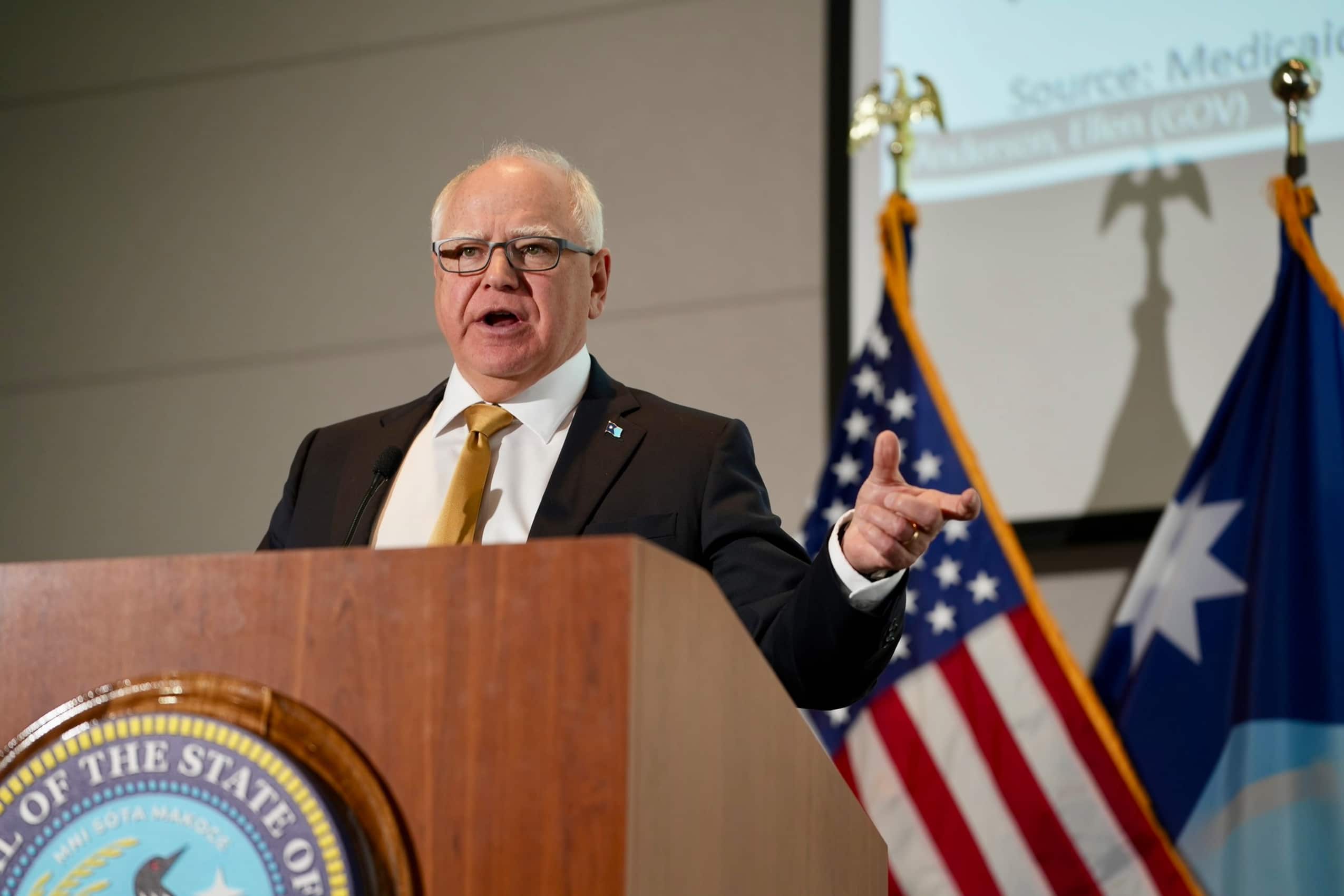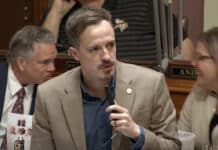
Arsema Mesfun told a room full of legislators at the Minnesota Capitol on Wednesday that when she finishes high school four years from now she intends to enroll in college and study nursing.
Mesfun’s parents are first-generation immigrants whom she described as middle class. Her mother works as a custodian for Hennepin Healthcare in Minneapolis.
“So maybe one day my mom will work with me” at the hospital, said Mesfun, an eighth-grader at St. John Paul II Catholic School in Minneapolis.
The teenager was one of several testifiers in a Senate Education Finance Committee hearing who pleaded with legislators to reject Gov. Tim Walz’s proposal to eliminate more than $223 million in nonpublic pupil aid from the state budget over the next four years.
Sen. Mary Kunesh, DFL-Shoreview, is sponsoring SF2255, which serves as the DFL Senate majority’s omnibus education finance bill. It reflects most of Walz’s budget proposal for E-12 funding.
Kunesh and her Democratic colleagues in the Senate decided to keep Walz’s proposed elimination of nonpublic pupil aid, but haven’t yet articulated their rationale.
In total, the bill proposes to allocate $25.7 billion across the E-12 education general fund for the 2026-27 biennium and $26.7 billion for the 2028-29 biennium. That comes as the state faces a looming $6 billion budget deficit.
While nonpublic pupil aid accounts for less than a half percent of the state’s education spending, those dollars are “make or break” for many families and private schools across the state, testifiers told legislators.
Nonpublic pupil aid has been allocated to tens of thousands of private school students over the last six decades, and helps subsidize bus transportation, textbooks and counseling services at their schools. As of 2022, more than 70,000 students were enrolled across more than 400 nonpublic schools in Minnesota.
While many states provide funding for nonpublic pupil aid, Minnesota was one of the first to do so. Transportation funding for private schools was approved by the legislature in 1969, and additional nonpublic pupil aid was solidified into statute in 1975.
Families rely on funding for transportation to private schools
During that April 9 hearing on the bill, Mesfun said her parents chose to enroll her at St. John Paul II because of its small learning environment and “how my school helps immigrant families access a good education.” She’s worried that if the legislature passes Walz’s proposal, families like hers won’t be able to afford to stay in their schools of choice.

“My school also helped me learn English, which took a lot of years, so I could be prepared for high school and eventually go to college to become a nurse,” Mesfun said. “Without transportation, there is no way my family would be able to choose JP2. My parents pay my tuition, but if the tuition is too high, they couldn’t afford this school.”
“We bus with the local public school Las Estrellas,” she continued. “I don’t understand why our busing would be cut when we share it with them and they would continue to get busing. I feel like this is a punishment to me just because my parents chose a different school.”
In the Phillips neighborhood of Minneapolis, Cristo Rey Jesuit High School serves more than 400 students, all of whom are students of color. Nearly 75 percent of those students live in multilingual homes, and every student receives financial assistance, said Jason Morrison, president of the grades 9-12 Catholic school.
“Safe and reliable transportation should not be a barrier for any student to access their education,” he told legislators on Wednesday. “For the majority of our families, this is the only way their children can get to school.”
Elimination of nonpublic pupil aid ‘short-sighted from a fiscal standpoint’
While legislators didn’t take any action on the bill last week, they are beginning to work through its various provisions that make up the education portion of Walz’s proposed budget in both the House and the Senate. A companion bill in the House of Representatives began its first of several hearings late last month.
With the state House tied 67-67, the provision would need support from at least one Republican to make it to the governor’s desk.
Several parents, teachers and administrators from private schools around the state have testified in both chambers, asking members to keep nonpublic pupil aid in the state budget.
A letter written in opposition to the cuts from the Minnesota Catholic Conference characterizes Walz’s proposal as “short-sighted from a fiscal standpoint.”
“Nonpublic schools save the state alone (not including local units of government) approximately $500 million per year,” wrote Matt Hughes, who serves as government relations director for the MCC. “If more students are priced out of nonpublic schools because schools have to raise tuition and have to attend public schools, both the state and public school districts will face increased budget pressures.”
On Wednesday, Michelle Kramer, who serves as superintendent of 13 Catholic school buildings in the New Ulm diocese, said bus transportation is a necessity for the “very rural” schools in her area.
“Nonpublic school students ride the very same buses that their public school counterparts do,” Kramer told the committee, “and so with eliminating this aid, the public system will not receive the funding for the nonpublics, but they’ll still be running the same routes; so it will still be a major challenge for them to be able to make budget.”
Peter Roufs is the principal at St. Mary’s Catholic School in Sleepy Eye. He told legislators that the school is celebrating 142 years, and much of its success over the past six decades has been due to the support it has received from the state in nonpublic pupil aid.
“Specifically cutting the aid to transportation and counseling will be extremely detrimental to our students,” Roufs said. “Reliable and safe transportation is vital for our families, and not having it would negatively impact our families financially and logistically.”
“I urge you members of the committee to continue to be part of our success formula and other schools by continuing aid to nonpublics,” Roufs added.
Hank Long
Hank Long is a journalism and communications professional whose writing career includes coverage of the Minnesota legislature, city and county governments and the commercial real estate industry. Hank received his undergraduate degree at the University of Minnesota, where he studied journalism, and his law degree at the University of St. Thomas. The Minnesota native lives in the Twin Cities with his wife and four children. His dream is to be around when the Vikings win the Super Bowl.










